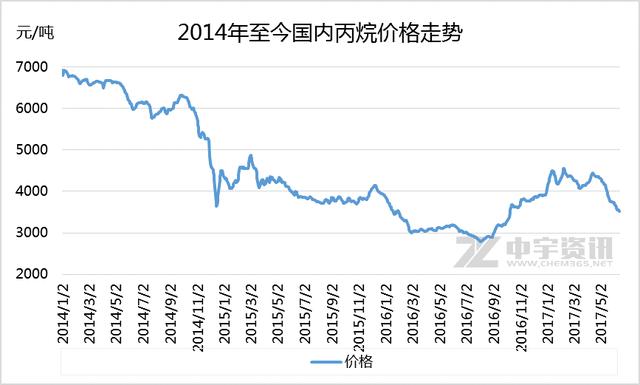
走在路上,偶尔会想起这个段子:两人过马路,甲冲着闯红灯的乙喊:“灯!等灯等灯!”乙回过头一脸不屑:“就你有英特尔啊!”
最近有个叫Maytree的组合将“等灯等灯”的精神贯彻到极致,用人声模拟经典手机铃声,打破了哔哩哔哩次元壁,进入了微信朋友圈。一边是AI语音生硬的语调被网友玩坏,一边是阿卡贝拉流电音模拟“以假乱真”,人与机器的“爱恨情仇”在轻娱乐中得以排遣。
“娱乐”的背后,令人焦虑的现实还在。从珍妮纺纱机到AI,“工人”与“人工”的竞争似乎进入了白热化。智能语音服务开始绕梁不散以前,接线员、传呼台就已销声匿迹。在技术带来的行业变革中,我们需要重新评估自己赖以养家糊口的“无差别的人类劳动”,如何才能在自动化大潮中不迅速贬值——毕竟,让每个人都把阿卡贝拉唱成铁饭碗也不现实。
“三百六十行”,难免有一些被技术进步堵成“死胡同”。纵然在康庄大道上,也有“等灯”的时候。拥有就业竞争力,个人努力无需赘言;但为了防止“35岁焦虑”、“内卷”成为社会性问题,还需要政府在市场调节失灵时适度干预,保证行业内和行业间的“红绿灯”切换得更为科学、公平。
Sidelines | International Workers' Day: Dancing to a robot's tune?
Sidelines is a column by CGTN’s Social Media Desk
As Siri, Alexa and Cortana are speaking in ever more realistic human voices, listening to online beatboxing hits that emulate the hallmark sound effects of iOS, Amazon and Microsoft feels like a human Rebel Alliance’s victory over the Galactic Empire of Artificial Intelligence.
A South Korean a capella group called Maytree have caused a sensation of vocal percussion across social media. A YouTube video of the five-member band recreating iPhone’s classic ringtones using their mouths has been played more than 12 million times.
Their imitation is so convincing, baring a few notes which sound slightly out of tune upon closer examination, that Siri, if it could think on its own feet, would feel threatened that humans were infiltrating its universe of the binary system.
But, to marvel at Maytree’s performance is also to acknowledge that there are some things which organic machines cannot rival machines in perfecting. Hence applause is due where it is deserved. The admission of imperfection comes with the territory of art where artificial interpretation of the naturalis bound to leave some discrepancies between the mimicked and the mimicking. But, the band’s popularity points out something slightly different to conventional beatboxing. The mimicked is no longer an instrument, such as a drum or a trumpet: It is now the digital. And our human touch is further away from the tunes that Maytree emulates.
In place of the natural world, we have gradually created an artificial one which representational art strives to mimic. The objectification of this new universe is crystalized in the performance of mimicking digital sound effects, signalling an uncertain turn in our perception of science and technology: The inventions of a digitalized world are no longer just an “extension of human body.”
Bicycles help us move faster, pens help us record more. Machines were designed to overcome human shortcomings. But human actions used to remain key in their operations. We celebrated, and in some trades still do, hand-made accessories, clothing and even hand-assembled motors in the belief that the refined human touch guaranteed the precision required to make quality goods, albeit at the expense of quantity.
The tide has been changing fast. Vehicles have saved us the labor of pedalling, planes have released us from the slavery of gravity. At the dawn of computer and the World Wide Web, we further yielded our power of remembering.
Now the power we have unleashed with the new world of digitalization has begun to rattle us by alienating our bodies even more dramatically.
If human errors are essentially neurological and therefore unavoidable, can minimizing human input produce a safer world? Some industries have started neutralizing risks this way. Self-driving cars, for example, are by far one of the best known experiments in this, producing mixed outcomes. Accidents due to driverless cars make us question: Humans or machines, which should be the last resort for safety?
Regardless the answer, this trend of automation may carry on and it’s not just our pride as the good driver that’s likely to get hurt. Our bread and butter could also be at risk.
According to a survey by the World Economic Forum released last October, 43 percent of businesses polled indicated that they were set to reduce their workforce due to technology integration. “Although the number of jobs destroyed will be surpassed by the number of ‘jobs of tomorrow’ created, in contrast to previous years, job creation is slowing while job destruction accelerates,” said the report.
Our weaknesses have been exposed further by the coronavirus pandemic, in stark contrast to machines’ strengths in not only streamlining processes, but also keeping life moving during lockdowns. We are left in a limbo. On the one hand we fear for more jobs being automated, on the other we are pushed to recognize that robots can be a safer option in a time of public health crisis.
As far as all categories of human jobs are concerned, our AI technology is still a safe way away from R2-D2, a reliable and versatile astromech droid in the Star Wars movies, and luckier still, the automation of an industry does not happen overnight. This gives governments as well as individuals breathing space to prepare for potential competition from machines. But strategy rethinking must be hurried.
Should subsidies, for example in the shape of tax cuts for companies, go to where machines have already gained the upper hand over humans? This is as much an economic problem as a political one. Holding out to preserve disappearing jobs for a little longer could buy time for the necessary training for people to be re-employed, while retaining a source of income. Where votes are pressing, however, politicians have to be aware that jobs once lost to automation are unlikely to return – not in their known forms anyway.
Long term policies to address the issue should focus on education. Higher and vocational education needs to be more in tune with the industries the students graduate into. What is taught in schools must catch up with what societies and markets need.
Yesterday marked International Workers’ Day. More than a century has passed after Chicago factory workers marched on the streets fighting for 8-hour work day. Mankind's relationship with machines has evolved into a far more complicated state than when streamlining was still a revolutionary idea.
In the not far off future, some of us may have to face the music and work harder to stay employed because of a new type of “workforce” that does not need food or a holiday. What governments need to do is make sure that robots never dictate the tune.
,




